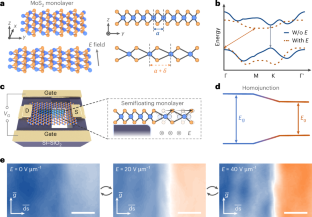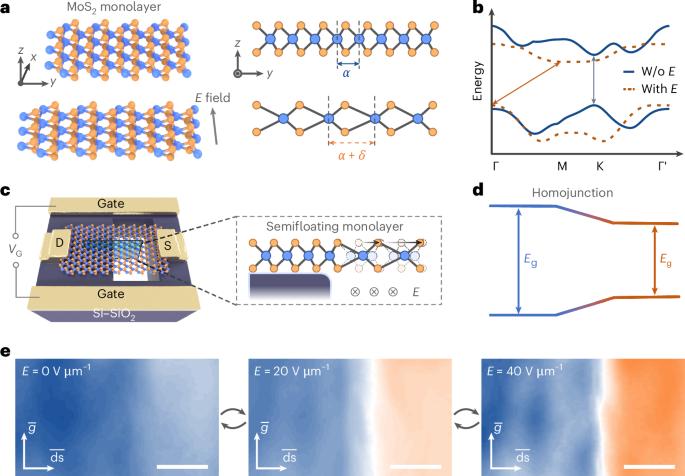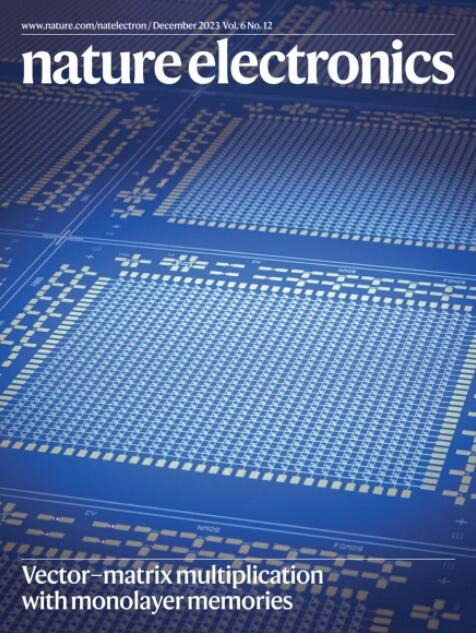A microspectrometer with dual-signal spectral reconstruction
IF 33.7
1区 工程技术
Q1 ENGINEERING, ELECTRICAL & ELECTRONIC
引用次数: 0
Abstract
Computational spectrometers with small footprints can be integrated with other devices for use in applications such as chemical analysis, medical diagnosis and environmental monitoring. However, their spectral resolution is limited because conventional photoelectric detectors only measure an amplitude-dependent response to incident light. Here we show that a deformable two-dimensional homojunction can be used to create a microspectrometer with dual-signal spectral reconstruction. The semifloating molybdenum disulfide homojunction exhibits a giant electrostriction effect through which the kinetics of photo-generated carriers can be manipulated via an in-plane electric field generated by gate voltage. By leveraging the tunability of both amplitude and relaxation time of the photoelectric response, a dual-signal response can be used with a deep neural network algorithm to reconstruct an incident spectrum. Our dual-signal microspectrometer has a footprint of 20 × 25 µm2, offers a resolution of 1.2 nm and has a spectral waveband number of 380, which is comparable to benchtop spectrometers. A semifloating molybdenum disulfide homojunction exhibits a photoelectric response with a tunable amplitude and relaxation time, which can be used for reconstructive spectroscopy with high resolution and a small device footprint.


双信号光谱重建微光谱仪
体积小的计算光谱仪可与其他设备集成,用于化学分析、医疗诊断和环境监测等应用。然而,它们的光谱分辨率有限,因为传统的光电探测器只能测量入射光的振幅响应。在这里,我们展示了一种可变形的二维同质结,可用于制造具有双信号光谱重建功能的微型光谱仪。半浮动二硫化钼同质结表现出巨大的电致伸缩效应,通过栅极电压产生的面内电场,可以操纵光生载流子的动力学。通过利用光电响应的振幅和弛豫时间的可调性,双信号响应可与深度神经网络算法一起用于重建入射光谱。我们的双信号微光谱仪占地面积为 20 × 25 µm2,分辨率为 1.2 nm,光谱波段数为 380,与台式光谱仪相当。
本文章由计算机程序翻译,如有差异,请以英文原文为准。
求助全文
约1分钟内获得全文
求助全文
来源期刊

Nature Electronics
Engineering-Electrical and Electronic Engineering
CiteScore
47.50
自引率
2.30%
发文量
159
期刊介绍:
Nature Electronics is a comprehensive journal that publishes both fundamental and applied research in the field of electronics. It encompasses a wide range of topics, including the study of new phenomena and devices, the design and construction of electronic circuits, and the practical applications of electronics. In addition, the journal explores the commercial and industrial aspects of electronics research.
The primary focus of Nature Electronics is on the development of technology and its potential impact on society. The journal incorporates the contributions of scientists, engineers, and industry professionals, offering a platform for their research findings. Moreover, Nature Electronics provides insightful commentary, thorough reviews, and analysis of the key issues that shape the field, as well as the technologies that are reshaping society.
Like all journals within the prestigious Nature brand, Nature Electronics upholds the highest standards of quality. It maintains a dedicated team of professional editors and follows a fair and rigorous peer-review process. The journal also ensures impeccable copy-editing and production, enabling swift publication. Additionally, Nature Electronics prides itself on its editorial independence, ensuring unbiased and impartial reporting.
In summary, Nature Electronics is a leading journal that publishes cutting-edge research in electronics. With its multidisciplinary approach and commitment to excellence, the journal serves as a valuable resource for scientists, engineers, and industry professionals seeking to stay at the forefront of advancements in the field.
 求助内容:
求助内容: 应助结果提醒方式:
应助结果提醒方式:


